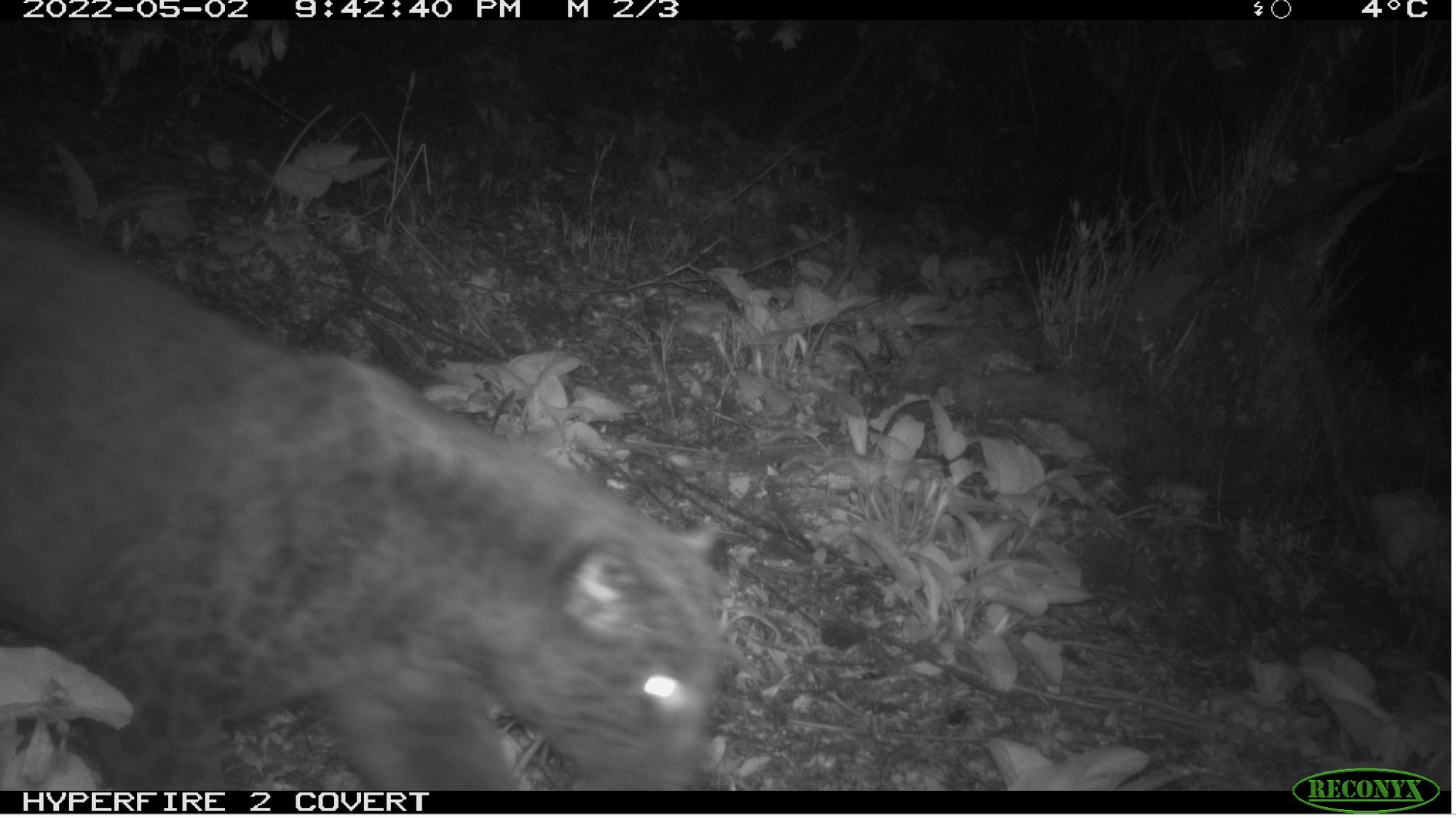
In 2022, I traveled to Bhutan through the School for Field Studies, which is a field research-focused study abroad program. During this time, I had the opportunity to conduct a study on how human-wildlife conflict changed due to the Covid-19 pandemic. Specifically, I worked alongside my research advisor, Dr. Tshering Tempa, to determine how people’s perceptions of human-wildlife conflict before and after the pandemic differed from the actual conflict.
To get a glimpse of what wildlife are present in the region of study, we set up a camera trap grid across the Paro Valley of western Bhutan along an elevational gradient and across land use types, from agricultural land to the middle of a mixed-leaf forest. We even set one up where locals had previously seen a snow leopard, at almost 14,000 feet! Although we didn’t end up capturing any snow leopards on our cameras, we did see some cool wildlife, including a takin outside of its usual range, lots of wild pigs, and even a melanated leopard, better known as a black panther!
After getting our camera trap grid set up, we conducted a survey of the residents of the Paro Valley to determine how residents perceived conflicts with wildlife to change (or not change) after the pandemic and whether they were using any mitigation methods to reduce conflict. Many people, especially those working in agriculture, felt that there was an increase in wildlife presence, but a decrease in conflict, and that wild pigs were the most common nuisance animal. Electric fencing has also become increasingly common.
These findings tell us that human perceptions of wildlife are consistent with the animals present in areas where conflict may occur. As the Covid-19 pandemic swept through Bhutan, strict restrictions on tourism took hold, resulting in many people returning to rural areas and relying more on agriculture for income. The increase in land used for agriculture often leads to more interactions with wildlife, resulting in potentially more conflict and damage to crops and livelihoods. Increases in electric fencing, as well as other mitigation methods, have led to peaceful coexistence, preventing severe economic loss from wildlife destroying crops or killing livestock.











